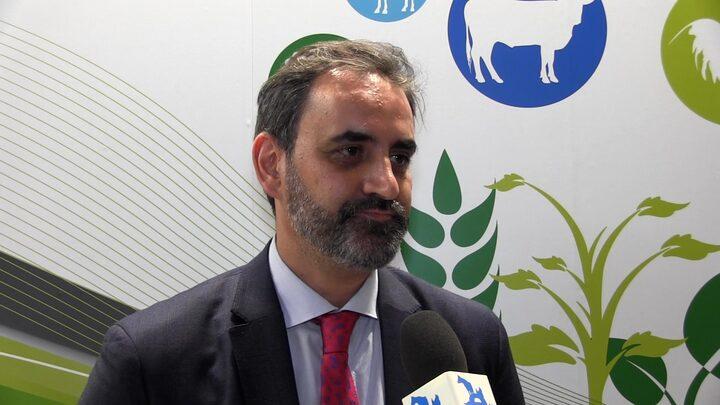Explore all the information on
Enzymes in poultry nutrition
Enzymes are proteins involved in all anabolic and catabolic pathways of digestion and metabolism. Digestive enzymes are categorised as endogenous or exogenous. Endogenous enzymes are produced by the animal and exogenous enzymes are administered from outside. Enzyme supplementation decreases nutrient loss through excreta, reduces diets nutritional levels, improves nutrient availability; thus, enhances production efficiency and profitability. In addition, exogenous enzymes hydrolyse non-starch polysaccharides, increase the usage of feed energy, reduce negative impacts of non-digestive residues on digesta viscosity, and improve gut microbial ecosystem. Cellulase, glucanase, pectinase, xylanase, galactisidases, phytase, non-starch polysaccharides degrading enzymes, amylase, lipase, cellulase, and protease are the most common enzymes used in poultry feed.
1. Industry challenges Gradual intensification of the poultry industry in the last half century has resulted in increasing challenges within the industry. With a growing world population the pressure has been on to grow bigger birds, faster and as cheaply as possible. Drivers for the industry have been increasing growth rates whilst maximising feed utilisation as feed is the biggest single cost for producers (Barletta,...
Comments : 3
Recommendations: 0
Introduction In recent years, the cost of energy for feed has increased, with increasing demand for cereals from the biofuels industries. It follows that there is currently pressure on feed manufacturers to maximise their efficiency of nutrient utilisation, particularly of energy but also phosphorous. The net result is that feed manufacturers are moved to consider use of feed additive enzymes such as xylanase for...
Comments : 2
Recommendations: 0
Greg Engelke, Managing Director at Cornerstone Resources LLC, speaks about enzymes and their nutritional value. ...
Comments : 0
Recommendations: 0
...
Comments : 0
Recommendations: 0
I. INTRODUCTION Proteolytic enzymes are involved in a great variety of physiological processes and their action can be divided into two different categories. Firstly, limited proteolysis, in which a protease cleaves only one or a limited number of peptide bonds of a target protein leading to the activation or maturation of the formerly inactive protein. Secondly, unlimited proteolysis, in which proteins are degraded into their amino acid...
Comments : 1
Recommendations: 1
A study was conducted to evaluate effect of high levels of corn DDGS and rye on growth performance and gut health of broilers as influenced by a nonstarch polysaccharides (NSP) degrading enzymes blend (CIBENZA ® CSM, Novus International, Inc.). The study consisted of 8 treatments: corn soy control, 30% DDGS, 16% corn bran, 38% rye, 38% rye plus enzyme, 25% rye, 25% rye 30% DDGS, and 25% rye 30% DDGS plus enzyme. Corn bran...
Comments : 0
Recommendations: 0
An 8wk (69 to 77wk of age) trial was conducted to evaluate the energy sparing effect of non-starch polysaccharide (NSP) multi-enzyme blend (2000U endo-xylanase, 75U endo-beta-glucanase and 25U alpha-galactosidase/g of product; CIBENZA® CSM feed additive) in laying hens fed iso-nitrogenous corn-SBM and wheat-SBM based diets with varied AMEn levels. A total of 216 Hy-Line W-36 laying hens were assigned to 6 treatments with 36 cages/treatment and 1...
Comments : 0
Recommendations: 0
Christian Lückstädt of Addcon talks about the use of organic Acids in animal nutrition and its benefits....
Comments : 0
Recommendations: 1
.jpg&w=3840&q=75)

Biodegradation of Mycotoxins: A Biotechnological Innovation for Safe Animal Feed
Suggested link
Enzymes are now widely used in animal feed. Various key reasons justify their use. Firstly, enzymes inhibit the action of anti-nutritional factors in the feed, which have an adverse effect on both the animal's digestive system and health. Secondly, enzymes improve access to the nutrients in the feed. Lastly, enzymes compensate for the lack of natural enzymes capable of breaking chemical bonds as well as the lack of enzymes in the undeveloped...
Comments : 1
Recommendations: 0
Introduction
Poor gut health in broiler chickens is a generalized term that means different things to different people (Truscott & Al-Sheikhly, 1977; Tierlynck et al ., 2009). Problems associated with shifts of intestinal bacterial populations (i.e. dysbacteriosis) gained notoriety as a key production issue with the removal of antibiotic growth promoters in the European Union (Hoerr, 1998; Lee, 2002). However, it...
Comments : 2
Recommendations: 0
.jpg&w=3840&q=75)

Candidate Genes Associated with Survival Following Highly Pathogenic Avian Influenza Infection in Chickens
Suggested link
I. INTRODUCTION Numerous works have shown substantial variation in nutritional value of soybean meals (SBM) due to several factors such as genotype, crushing, anti-nutritional factors, implying a need for better and rapid characterization (De Coca-Sinova et al., 2008; Karr-Lilienthal et al., 2004). During the past two decades, Adisseo has been conducting in vivo studies to evaluate digestibility of amino acids (Green et al., 1987) and...
Comments : 1
Recommendations: 0
INTRODUCTION Poultry industry present and future is focused on becoming a sustainable industry, on one side by decreasing the consumption of ingredients used also as human food, by increasing the use of alternative feedstuffs, and also by developing technologies to allow an increase on the digestible fraction of the feed, to diminish environmental pollution, for example exogenous enzymes addition to the feed. In the case...
Comments : 2
Recommendations: 0
Myths that have erroneously limited feed-grade amino acid inclusion in poultry diets have been dispelled in these proceedings by presentation of a historical perspective. In addition, recent research has been presented which has allowed for aggressive feed-grade amino acid inclusion that maintains good bird performance in diets with reduced costs and environmental impact. Namely, in the past 10 to 15 years numerous research reports have delineated threonine,...
Comments : 2
Recommendations: 0
INTRODUCTION The use of additives in feed for broilers is increasing every day. Enzymes are the most commonly used in this segment, they are very effective in increasing nutrient availability to broilers and guarantees the farmer a lower cost feed formulations and also an improvement in rearing conditions. Enzymes in the diet and improves the efficiency of poultry production by...
Comments : 0
Recommendations: 0
INTRODUCTION Improving the efficiency of the use of nutrients and causing a formulation to be more precise are the most effective methodologies intended to reduce losses of nutrients and improve performance parameters. According to GUENTER (2002), enzyme supplementation to animals is intended to remove or destroy anti-nutritional factors of grains and increase total digestibility of...
Comments : 0
Recommendations: 0
INTRODUCTION Major advances have occurred in poultry in the last decades, thus making it one of the most developed segments of world agriculture. Many researchers have been conducted in nutrition area in search of alternatives to enable the formulation of rations and more efficient economical, in view of that power has the largest cost in the production of broilers. The use of enzymes...
Comments : 0
Recommendations: 0
Phytate has direct anti-nutritional effects on poultry and swine, causing reductions in performance by lowering amino acid and mineral absorption and increasing endogenous losses. PHYTIN (a deposited complex of inositol hexaphosphate with potassium, magnesium and calcium) - more recognized in animal nutrition as phytate - is the major storage form of phosphorus present in seeds. ...
Comments : 6
Recommendations: 0
Introduction
Phytate phosphorus, in its natural state in feed, forms complexes with different nutrients, including proteins, lipids, and minerals. Exogenous phytases not only release the phosphorus attached to the phytate acid molecule, but also the phosphorus attached to other nutrients, such as calcium and amino acids. The reduction of the cost of phytase in recent years, along with the increase...
Comments : 1
Recommendations: 0
Introduction
Individual feed ingredients commonly used in poultry may vary widely in composition and nutrient availability because of variation in cultivars, growing conditions, processing and storage conditions (NRC, 1994). In spite of this, in recent years the major improvements in nutrition and the efficiency of production have relied on obtaining maximum nutrient utilization from feedstuffs,...
Comments : 0
Recommendations: 0






.jpg&w=3840&q=75)











.jpg&w=3840&q=75)











